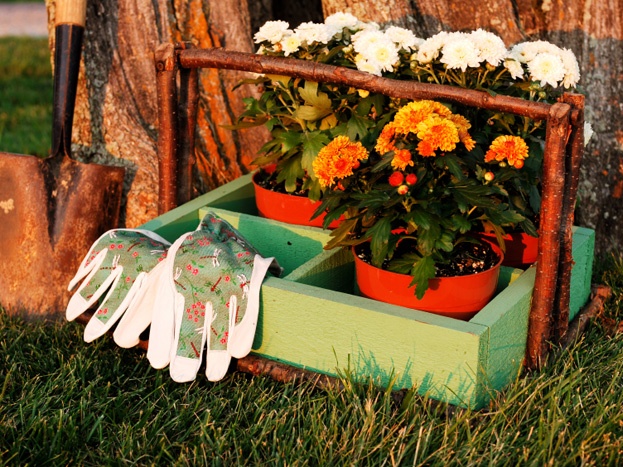 Summer was lovely, filled with swimming trips to Lake George and picnicking in Saratoga Spa State Park, but many folks think of the fall as their favorite time of the year. There's the annual Apple Festival in Castleton-on-Hudson and Oktoberfest celebrations all over. New York's fall foliage display is unequalled for its beauty and abundance. During the fall, working in your garden is satisfying in a way that other seasons can't match.
Summer was lovely, filled with swimming trips to Lake George and picnicking in Saratoga Spa State Park, but many folks think of the fall as their favorite time of the year. There's the annual Apple Festival in Castleton-on-Hudson and Oktoberfest celebrations all over. New York's fall foliage display is unequalled for its beauty and abundance. During the fall, working in your garden is satisfying in a way that other seasons can't match.
It's time to see to your garden -- to prepare it for the cold season and next spring. There's enough time, too, to grow a quick vegetable crop such as radishes, parsley, kale or spinach, before the first frost.
Plant Bulbs Now for a Beautiful Spring
Tulips, irises, hyacinths, daffodils, and crocuses all need a winter freeze to start their growth for the spring. Once temperatures reach 50 degrees, put them in the ground with a mixture of bone meal and fertilizer, water well, and they'll reward your effort with a stunning display in the spring.
Examine Container Plants
Have your pot plants grown too large for their containers? Clues are soil that's become compacted and roots that are creeping out of the bottom of the pot. The fall is the time to repot these plants.
Plant and Trim Shrubs and Trees in the Fall
The early fall is the very best time to plant broad-leaved and needle-leaved evergreen shrubs and trees. After mid-October, plant deciduous trees. This gives the plants a chance to become established in their new homes by sending out the roots they need for their nourishment, without fighting against the harsh summer sun, which can dry them out quickly. To protect against the cold and snow, you may want to wrap their branches in burlap for protection during their first winter.
Clear Out Leaves, Dead Branches, Weeds and Perennials
Trimming perennials and cleaning up leaves will avoid future garden problems such as insects, slugs and snails, and powdery mildew on roses and apple trees. Remove dead and diseased branches from trees (but don't prune at this time). Weeding in the fall will help to limit the number that will grow back in the spring. You can add all this garden debris to your compost pile for future use; remember to avoid using diseased material.
Fall Lawn Care
Although growth of your lawn will slow above ground in the autumn, below the surface your lawn continues to establish the network of roots that strengthens it. Adding some phosphorus-rich fertilizer to your lawn now will do wonders for your lawn's comeback in the spring.
Enrich your Soil with Compost
Fall is the best time of the year to add compost or grass clippings to your garden soil. Incorporate them after the first hard frost (but before the ground freezes). You'll find that your soil's condition will be much improved in the spring.
Mulch to Protect from Temperature Swings
After the ground is frozen, your garden will benefit from a layer of mulch. You can use grass clippings, hay or straw, disease-free leaves, or pine needles. This mulch will keep soil temperatures more stable and prevent root damage. Mulch will also prevent soil erosion.
The New York Department of Health’s website has lots of tips on gardening in this area. Also
The New York Botanical Garden website includes tips for gardening in all seasons.





.svg)
.jpg?width=83&name=30th%20Anniversary%20seal%20digital2%20(1).jpg)

